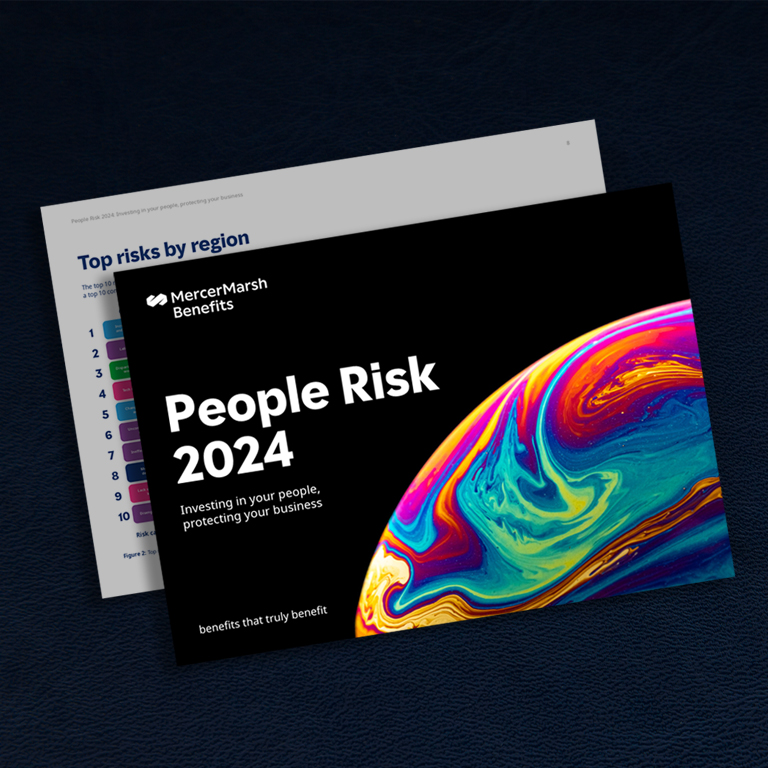It’s never been more important for employers to look after the health and well-being of their people. But in the current global economic crisis, the cost of doing so is growing. In these volatile times, firms must prioritize innovative solutions for tackling workplace well-being in a cost-effective manner.
The COVID-19 pandemic highlighted the importance of keeping employees safe, healthy and productive. But employee benefits programs are now coming under pressure from spiraling inflation rates.
Rising energy and food costs are exacerbating medical inflation. Medical claims are surpassing prepandemic levels, while COVID-19 continues to make many medical cases more complicated. As a result, ailments are becoming more frequent and lasting longer, accelerating treatment costs. Nurses cost more; doctors cost more; medicines cost more.
Our Health Trends report found that insurers expect medical plan costs to increase by 11.5% in Asia as we face ongoing uncertainty about the future.
2018-2022 Medical Trend
One consequence of rising inflation and higher medical claims rates is that the cost of group life insurance policies is also increasing. Faced with these economic realities, employers are understandably looking for ways to manage costs — while still attracting and retaining talent.
But simply looking at renewal prices isn’t enough. Organizations need to control the cost of their benefits programs more holistically, through better management of people risk, employee well-being and medical claims. This means working with flexible advisers that can help leverage technology to find new, cost-effective solutions for promoting wider workplace health.
Yet even though our The People Risk Report 2022 research shows that 70% of HR and risk managers are working to address the increasing costs of health, risk protection and well-being benefits, just 42% currently have an effective cost-containment strategy that combines plan design, health risk management and insurance placement.
So what should employers do? We suggest taking the following three steps:
- Adopt a holistic approach to employee health and well-being, incorporating risk management to better understand employees’ healthcare requirements.
- Work with a trusted and innovative adviser to source the right products for your specific needs and budget.
- Use data and analytics to understand your organization’s unique people risks and maintain business continuity.
Adopt a holistic approach
First, employers must recognize that although a good healthcare plan provides an important safety net for staff, it should form just one part of a much wider approach to maintaining workforce well-being.
Focusing on prevention and creating a culture of health are both critical. For example, when we analyze MMB’s claim experience from 2021, we see an average of 90% of medical claims being made for relatively minor illnesses and injuries[1]. It would be beneficial for everyone involved if these issues could be managed more proactively; for example, through preventive care, sick leave and other well-being initiatives. Employers could also run communication campaigns to educate employees about the risk of delaying preventive care.
Working to ensure minor illnesses and injuries don’t turn into chronic conditions not only improves general well-being, it also helps employers reduce claims costs. Smart healthcare design might also involve implementing copay structures to encourage staff to find alternative means of managing minor health issues, such as telemedicine.
In short, well-being risks need to be managed just like any other business risk, which means implementing a long-term strategy for preventing problems and managing them in a cost-effective manner when they do occur.
Work with a trusted adviser
Second, employers should look for an adviser with the scale that enables it to negotiate with the widest possible range of insurers, the expertise to suggest the right innovative solutions and in-depth knowledge of local regulations.
When budgets are under pressure, it’s even more important to invest in specialists that know their markets inside and out, trusted to secure the right products at the right price.
Whether that means delivering a lean, efficient, value-for-money program or a rich, flexible product designed to attract and retain the highest-quality talent, firms need to work with someone that understands their unique requirements.
Furthermore, in these volatile times, the market is driven by innovation. For instance, we have already seen new solutions geared toward managing the risks created by coronavirus, the Ukraine war and widespread mental health issues, to name a few.
It’s important that employers work with firms that have both the muscle and the brain power to manage the new threats — and can work with providers to create cost-effective solutions.
Use data and analytics to inform plan design
Finally, employers need to use data and analytics to understand their people risk and how best to manage it. They should periodically review their data alongside their trusted adviser to gain a better understanding of how well their health insurance plans are performing and to plan for their organizations’ unique circumstances. This will allow them to implement a well-designed strategy based on historical illness and injury information, claims history and future claims projections.
For example, how would your business be disrupted if 20% of the workforce were struck down by a virus and had to stay home? Or if a key project manager suffered an injury and had to take three weeks off work?
The best providers will offer products and services designed to maintain business continuity while protecting the well-being of the workforce, helping employers balance the health and resilience of their organizations as well as their people.
This needs to be a continuous process, allowing employers and their programs to adapt to new and unforeseen circumstances. For instance, throughout the pandemic, we saw that organizations that thrived were those that were able to flex and continue operating while also keeping employees safe and healthy in the face of an unknown and constantly changing landscape. As local regulations changed by the minute, firms had to adapt how they worked while dealing with emerging issues, such as poor mental health.
Businesses that want to build back successfully must ensure they’ve learned the lessons from the COVID-19 crisis and that their benefits programs, providers and consultant that you collaborate with are well placed to adapt to any challenges the future may pose.
Protecting your people and your business
Here at MMB, we understand the immense pressures employers are under to control the costs of their benefits programs — but we also know that organizations still want to invest in their people and to continue to attract and retain the best talent. Every day, we help companies worldwide achieve this win-win outcome and begin to build back from the devastating impact of the COVID-19 pandemic.
Our specialist teams are on the ground in 135 countries and servicing clients in more than 150 — meaning we offer deep local relevance at a global scale. We can make the data-driven, value-based decisions needed to help deliver products that will protect your people and your business, even during these most turbulent of times.
[1] Mercer Marsh Benefits recent client claims experience. 2020-2022.
Our people
Related insights

Article,Report
People Risk Report 2024
19/06/2024



